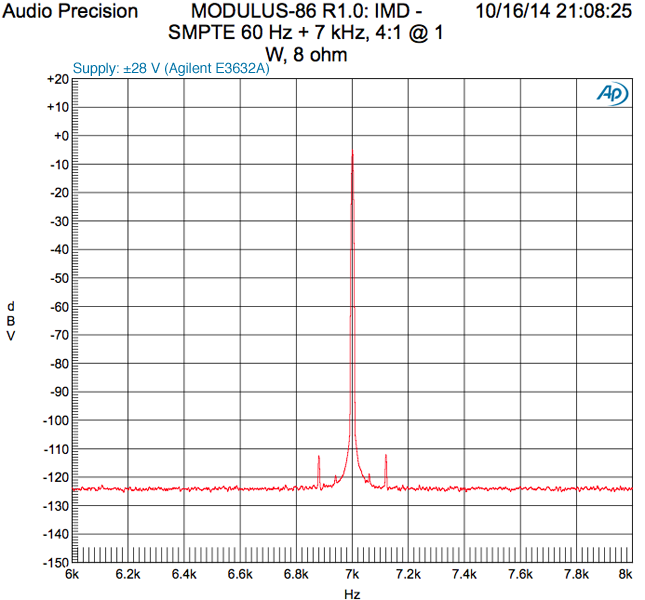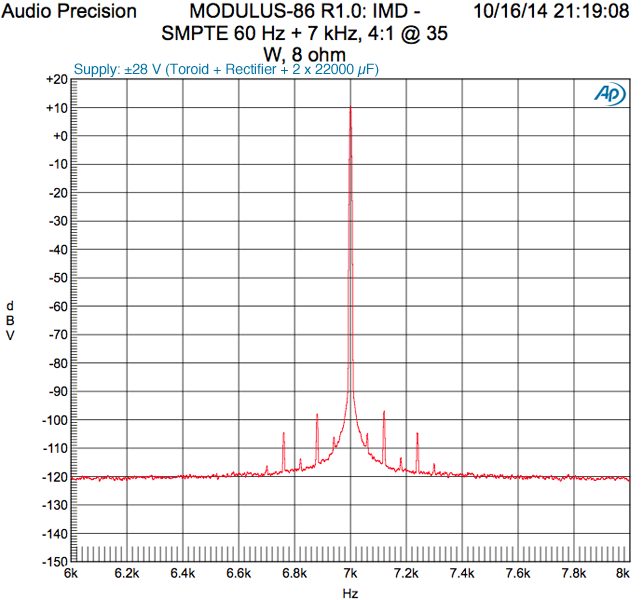Hi Tom,
LM3886 is class AB-A, that means it's works in class A at low level (I read about 1 watt), but with Modulus, it should be more ?
Hi Dominique,
About Mouser, I ordered some components last month, shipping was free for 65 euros like Bill said. My order was at mouser.fr and box came from Germany !
Phil.
Hi Phil,
I talked to them, nothing is shipped from Europe. Free shipment is subject to condition, especially if you order heavy stuff, like I wrongly did (the transformer). The site gives you the impression they are established in Europe, this is why many of us are confused...
Dominique T
All packages are shipped from the US, but they route them through EU-based warehouses.
My invoices have an EU-registered VAT number from France, so they have established a subsidiary there or something.
My invoices have an EU-registered VAT number from France, so they have established a subsidiary there or something.
My Mouser Parcel arrived this morning. So for me they get thumbs up for cost and speed of delivery. But the warning on heavy parts should be noted.
Time to solder
Time to solder
All packages are shipped from the US, but they route them through EU-based warehouses.
My invoices have an EU-registered VAT number from France, so they have established a subsidiary there or something.
Hi,
Yes my box come from US too, by plane under two days, but invoices name said "Mouser Munich Germany".. Maybe for tax or customs ?
Phil.
Hi Tom,
Thank's for reply about class AB-A..
Hi Tom,
LM3886 is class AB-A, that means it's works in class A at low level (I read about 1 watt), but with Modulus, it should be more ?
Hi Dominique,
About Mouser, I ordered some components last month, shipping was free for 65 euros like Bill said. My order was at mouser.fr and box came from Germany !
Phil.
I would expect the ClassA output of the 3886 to be anywhere between 1mW and 20mW.The LM3886 is operating in Class AB with a quiescent current of approximately 50 mA. Assuming all 50 mA flow in the output stage, this means the LM3886 would go from pure Class A to Class AB operation at about 10 mW. Note that even with my relatively inefficient speakers (87 dB/W*m) that still results in about 70 dB SPL at the listening position... That's comfortably loud.
The Modulus-86 does not change this. It does, however, perform error correction on the LM3886 to drive the distortion products to pretty darn close to zero (hence, the 2 ppm THD measured).
~Tom
20mW of ClassA would require the output pair bias to be set to slightly over 35mA
1mW of ClassA would require the output pair bias to be set to slightly over 8mA
20mW is ~-17dB ref 1W and 1W is ~-16dB ref 40W
Listening at an average level of -33dB ref maximum power will result in the output stage moving in and out of ClassAB repeatedly on just about every waveform slope change.
If one wants to take advantage of ClassA for average levels, then I'd suggest that the ClassA output target be set at around -10dB to -16dB ref maximum power. This requires output bias currents in excess of 250mA for a 40W ClassAB amplifier.
If one wants to take advantage of ClassA for average levels, then I'd suggest that the ClassA output target be set at around -10dB to -16dB ref maximum power. This requires output bias currents in excess of 250mA for a 40W ClassAB amplifier.
In which case (and apologies to the Late Alec Guinness), this is not the amplifier you are looking for! However as I can see no evidence that the low levels of classA cause any detriment to performance I can live with it.
Indeed.
This composite gives such a clean output, that even crossover distortion will be attenuated along with the THD.
This composite gives such a clean output, that even crossover distortion will be attenuated along with the THD.
I would expect the ClassA output of the 3886 to be anywhere between 1mW and 20mW.
20mW of ClassA would require the output pair bias to be set to slightly over 35mA
Without seeing the schematics and design review for the LM3886, it's really anybody's guess how much of the total bias current flows in the output stage. I will venture that the majority of the 50 mA (typ) 85 mA (max) quiescent current flows in the output stage. How much? Who knows! Probably 40 mA (typ). Maybe more.
40 mA peak = 28.3 mA RMS. Into 8 Ω, that's 6.4 mW.
In my previous math, I threw all 50 mA into the output stage. So 50 mA peak = 35.4 mA peak --> 10 mW into 8 Ω.
The Modulus-86 has such a high loop gain that this discussion is really academic at this point. The error correction in the Modulus-86 suppresses the distortion products to be some 115 dB below the desired output signal.
~Tom
Only the LF errors are suppressed by the full 115dB stated above.
harmonics extend to way above LF.
Therefore many of the harmonics do not get suppressed by 115db.
At the highest frequencies of the distortions, the HF attenuation due to the composite feedback will be falling to single digit dB values.
harmonics extend to way above LF.
Therefore many of the harmonics do not get suppressed by 115db.
At the highest frequencies of the distortions, the HF attenuation due to the composite feedback will be falling to single digit dB values.
That's true, but we only care about the amount of feedback at audible frequencies. We can't hear distortion harmonics above 20kHz. From Tom's circuit description and published THD plots, I'd expect the loop gain at 20kHz to be something like 20dB in the composite feedback loop and another 20dB in the LM3886's inner one.
We hear distortions from misbehaviour way above 20kHz............... but we only care about the amount of feedback at audible frequencies. We can't hear distortion harmonics above 20kHz..................
That's why we look at IMD for 19k and 20kHz, the multiple frequencies and the non linearities fold back into the audio band below 20kHz and we hear that misbehaviour if it is bad enough.
We are relying on very good linearity to suppress the IMD or as in this case very good NFB upto HF frequencies to suppress the IMD.
Tom has shown us some results of that very good performance.
It is wrong to suggest that ONLY performance below 20kHz is what we hear.
Just as it's is misleading to suggest -115dB of attenuation for all distortions.
The amount of feedback available to correct a distortion harmonic is the amount at the frequency of that harmonic. If some stuff "folds back into the audio band" then it will be corrected according to the amount of feedback available in the audio band.
Say we do an IMD test with 49 and 50kHz. If the amp has 60dB of feedback at 1kHz, the 2nd order product at 1kHz will be attenuated by 60dB compared to the open-loop case. The amplitude of this 2nd order product is not affected by the amount of feedback at 49kHz, or 50kHz, or any other frequency but 1kHz.
Say we do an IMD test with 49 and 50kHz. If the amp has 60dB of feedback at 1kHz, the 2nd order product at 1kHz will be attenuated by 60dB compared to the open-loop case. The amplitude of this 2nd order product is not affected by the amount of feedback at 49kHz, or 50kHz, or any other frequency but 1kHz.
We don't hear the artifacts above 20KHz as sound but as the degradation of your soundstage so in that sense, I agree with AndrewT.
Only the LF errors are suppressed by the full 115dB stated above.
Um, no. The harmonics are 115 dB below the fundamental, hence, the 0.00018 % (1.8 ppm) THD.
The error signals are suppressed by the loop gain of the amplifier. At DC, the loop gain of the Modulus-86 is about 250 dB. At 20 kHz, the loop gain is 47 dB, rolling off at -20 dB/dec.
~Tom
We don't hear the artifacts above 20KHz as sound but as the degradation of your soundstage so in that sense, I agree with AndrewT.
Monty Montgomery of xiph.org has some test files you can try on a digital system capable of high sampling rates, if you're feeling brave. Look under "intermod tests" here: https://people.xiph.org/~xiphmont/demo/neil-young.html
On the good system I use for critical listening, I can play any of these files as loud as I dare, limited by fear of burning up the tweeters. I just hear a faint whisper and fizzle of intermod, and it could be coming from the poor tweeters themselves as likely as from the power amp.
When I try it on my other system with the Crown tube amp, YUCK.
How does the Modulus-86 handle them? 🙂
I've just started a build thread over on the chip amps forum. Sadly no time to actually start soldering yet, but will crack on with that tomorrow.
How does the Modulus-86 handle them? 🙂
You can build one and find out... 🙂
On a serious note, I suspect the MOD86 will go "meh!" and continue on with life. At least if the intermodulation measurement I took a while back is any indicator. See Post #213. Two of the plots reproduced below.


~Tom
Not sure if this has been asked already (perhaps you should post a FAQ), but what could have been gained/lost if you chose to use an LM4780 instead of an LM3886?
Not sure if this has been asked already (perhaps you should post a FAQ), but what could have been gained/lost if you chose to use an LM4780 instead of an LM3886?
To what I read, this is part of the next design from Tom, so more to come!
Do
Best to say watch this space. Tom has admitted on another forum he is looking at a 4780 variant. If you view it simplistically as 2 3886s in one package you get more power from one board, but no real improvement in thermals. Depends if you need more power into 4 ohms (parallel) or 8 ohms (bridged).
what I don't know is if the 4780 is thermally limited that will limit the potential advantages.
what I don't know is if the 4780 is thermally limited that will limit the potential advantages.
- Home
- Vendor's Bazaar
- Modulus-86: Composite amplifier achieving <0.0004 % THD+N.